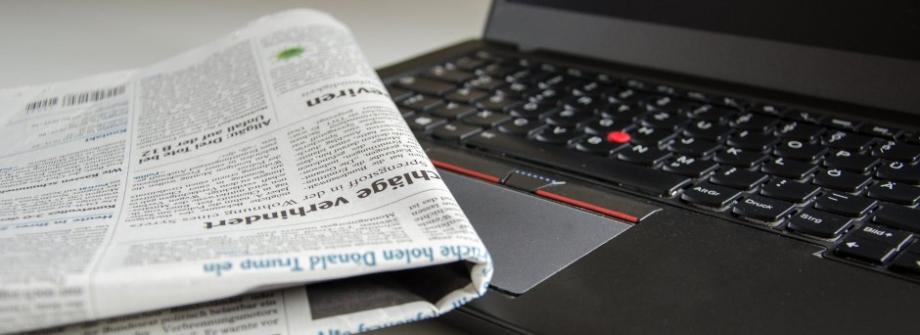
Mohamed A. Kharfan-Dabaja, Haematology Vice-Chair and Firas Baidoun, Haematology-Oncology Fellow, Mayo Clinic Florida, comment on the publication titled “Five-year follow-up of ZUMA-1 supports the curative potential of axicabtagene ciloleucel in refractory large B-cell lymphoma" published in Blood.
Five-year follow-up of ZUMA-1 supports the curative potential of axicabtagene ciloleucel in refractory large B-cell lymphoma
Sattva S. Neelapu et al.
Blood. 2023;141(19):2307-2315. doi:10.1182/blood.2022018893
Chimeric antigen receptor T-cell therapies (CAR T) targeting the CD19 antigen were initially approved for relapsed/refractory large B-cell lymphoma after 2 or more prior lines of therapy1–4. Recently, two CAR T-cell therapies, namely axicabtagene ciloleucel (axi-cel) and lisocabtagene maraleucel (liso-cel), have been also approved in the second line setting5,6. With the growing role of CAR T-cell therapy for various types of B-cell lymphomas, there is a need to understand the long-term efficacy and safety of this type of therapy.
Axi-cel was approved in October 2017 by the United States Food and Drug Administration for treatment of patients with relapsed and/or refractory diffuse large B-cell lymphoma (DLBCL), de novo or transformed follicular lymphoma (tFL), and primary mediastinal B-cell lymphoma (PMBCL) based on results of the ZUMA-1 trial7. The ZUMA-1 trial was a multicenter, single-arm phase 1/2 study that evaluated outcomes of 101 adult patients with DLBCL (N=77), PMBCL (N=8) and tFL (N=16) treated with axi-cel.
In a long term follow-up analysis, Neelapu et al. assessed outcomes of ZUMA-1 after 5 years8. In this analysis, several important endpoints were assessed: response, duration of response (DOR), event-free (EFS), progression-free (PFS), overall survival (OS), long-term safety, and correlative biomarkers.
Pertaining to efficacy, the objective response rate (ORR) was 83%, with documented complete remission (CR) in 58% and a partial response (PR) in 25%. After a median follow-up of 63.1 months (range, 58.9-68.4), the median DOR was 11.1 months, with median duration of CR of 62.2 months and median duration of PR of only 1.9 months. Median EFS was 5.7 months (95% CI, 3.1-13.9) and the estimated 5-year EFS rate was 30.3% (95% CI, 21.5-39.6). Median PFS was 5.9 months (95% CI, 3.3-15.0), and the 5-year PFS estimate was 31.8% (95% CI, 22.9-41.1).
Median OS in patients who received treatment was 25.8 months (95% CI, 12.8-NE), and the 5-year OS rate was 42.6% (95% CI, 32.8-51.9). The 5-year disease specific survival was 51.0%.
The authors also analyzed the OS based on EFS events and found that patients with EFS event by 12 months had 5-year OS rate of 5.3% vs 90.9% in patients without EFS event by 12 months. Similarly, patients with EFS event by 24 months had 5-year OS rate of 11.3% vs 92.3% in patients without EFS event by 24 months.
Pertaining to safety, there was no significant new information when compared to the initial ZUMA-1 report after the 2-year analysis except that immunoglobulin therapy was administered to 3 patients (2 for prophylaxis and 1 because of grade 2 immunoglobulin G decrease related to axi-cel).
Cytokine release syndrome (CRS) occurred in 93% of the patients, with grade ≥3 events in only 11%. Neurologic events occurred in 64% of patients with grade ≥3 events in 30%. Also, 43% of patients received tocilizumab and 26% received corticosteroids for management of CRS and/or neurologic events.
It is worth mentioning that there were no reported secondary malignancies related to axi-cel and the grade 3 cytopenia that was reported in 2 cases in the initial 2-year analysis resolved before data cutoff for this analysis.
Lastly, pertaining to biomarker analysis, it was noted a correlation between early axi-cel expansion and long-term response. Also, 91% of patients with ongoing response 3 years after infusion had evidence of humoral immune system restoration demonstrated by polyclonal B-cell recovery and diversity. This suggests that having prolonged B-cell aplasia is not a pre-requisite for durable responses in refractory LBCL receiving axi-cel.
References
1. Abramson JS, Palomba ML, Gordon LI, et al. Pivotal Safety and Efficacy Results from Transcend NHL 001, a Multicenter Phase 1 Study of Lisocabtagene Maraleucel (liso-cel) in Relapsed/Refractory (R/R) Large B Cell Lymphomas. Blood. 2019;134(Supplement_1):241-241. doi:10.1182/blood-2019-127508
2. Abramson JS, Palomba ML, Gordon LI, et al. Lisocabtagene maraleucel for patients with relapsed or refractory large B-cell lymphomas (TRANSCEND NHL 001): a multicentre seamless design study. Lancet. 2020;396(10254):839-852. doi:10.1016/S0140-6736(20)31366-0
3. Schuster SJ, Bishop MR, Tam CS, et al. Tisagenlecleucel in Adult Relapsed or Refractory Diffuse Large B-Cell Lymphoma. N Engl J Med. 2019;380(1):45-56. doi:10.1056/NEJMoa1804980
4. Locke FL, Ghobadi A, Jacobson CA, et al. Long-term safety and activity of axicabtagene ciloleucel in refractory large B-cell lymphoma (ZUMA-1): a single-arm, multicentre, phase 1–2 trial. Lancet Oncol. 2019;20(1):31-42. doi:10.1016/S1470-2045(18)30864-7
5. Kamdar M, Solomon SR, Arnason J, et al. Lisocabtagene maraleucel versus standard of care with salvage chemotherapy followed by autologous stem cell transplantation as second-line treatment in patients with relapsed or refractory large B-cell lymphoma (TRANSFORM): results from an interim analysi. Lancet. 2022;399(10343):2294-2308. doi:10.1016/S0140-6736(22)00662-6
6. Locke FL, Miklos DB, Jacobson CA, et al. Axicabtagene Ciloleucel as Second-Line Therapy for Large B-Cell Lymphoma. N Engl J Med. 2022;386(7):640-654. doi:10.1056/NEJMoa2116133
7. Neelapu SS, Locke FL, Bartlett NL, et al. Axicabtagene Ciloleucel CAR T-Cell Therapy in Refractory Large B-Cell Lymphoma. N Engl J Med. 2017;377(26):2531-2544. doi:10.1056/NEJMoa1707447
8. Neelapu SS, Jacobson CA, Ghobadi A, et al. Five-year follow-up of ZUMA-1 supports the curative potential of axicabtagene ciloleucel in refractory large B-cell lymphoma. Blood. 2023;141(19):2307-2315. doi:10.1182/blood.2022018893